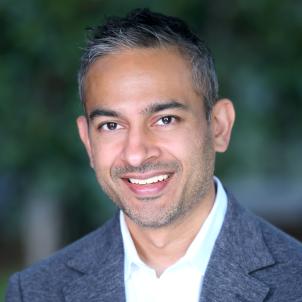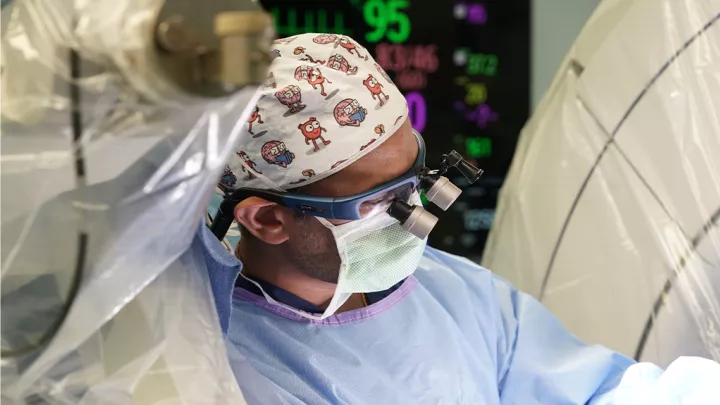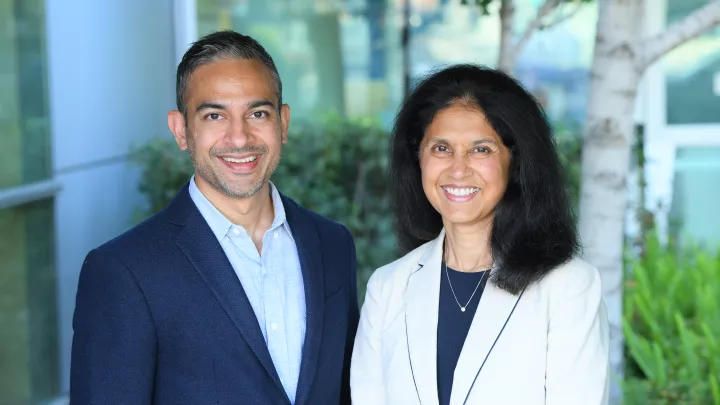
A ‘Pacemaker’ for the Brain? What to Know About Thalamic Responsive Neurostimulation for Epilepsy
In 1960, doctors in Buffalo, New York, implanted the first heart pacemaker into a 22-month-old boy, Larry Graves. He was the first child to receive this lifesaving technology that has since aided countless adults and children with abnormal cardiac rhythms.
It wasn’t until about 10 years ago, though, that medical technologists developed a similar solution for the brain. Responsive neurostimulation (RNS) is a groundbreaking, minimally invasive technology that greatly improves the quality of life for people living with epilepsy, the most common brain disorder in children.
The newest application of RNS therapy, called thalamic RNS, is now available for children with the toughest-to-treat forms of medication-resistant epilepsy. Doctors place a device similar to a heart pacemaker in the brain to monitor for seizures and stop them—often before a person can tell they’ve even started.
How is epilepsy defined?
Epilepsy, a brain disorder characterized by chronic seizures, affects more than 470,000 kids in the United States. Seizures happen when the brain fires abnormal electrical signals. They often present as temporary and sudden changes in movement or behavior, and children may become confused, immobile, or unresponsive for short periods during a seizure.
While 10% of children will have at least one seizure in their lifetime, kids with epilepsy can have anywhere from a few seizures throughout their lives to multiple seizures per day.
Well-validated medications like phenobarbital have been a first-line standard treatment for a majority of patients for more than 100 years—but one-third of all patients with epilepsy don’t respond to medication or diet therapy. That’s when the patient’s care team may begin exploring surgical options.
Why thalamic RNS?

For people with focal epilepsy, or seizures traced to a specific section of the brain, doctors can connect the RNS system directly to that location. For people whose seizures can’t be pinpointed, or whose seizures are found to arise from the entire brain, the only option previously was a vagus nerve stimulator (VNS). While VNS reduces seizures in half of patients, the other half may respond poorly or have no response at all.
Before RNS treatment, if VNS failed, patients were left with no other treatment option. Today, the new thalamic RNS system offers a much-needed solution.
Virendra R. Desai, MD, Surgical Director of the Comprehensive Epilepsy Center at Children’s Hospital Los Angeles, explains how. “The thalamus is a deep center of the brain that's connected to everything. It acts as a control hub. Thalamic RNS empowers us to affect the entire brain by sending important messages directly to that control hub.”
Who is a candidate for thalamic RNS?
To determine if thalamic RNS is right for patients and their specific form of epilepsy, Dr. Desai recommends they undergo several diagnostic tests at a Level 4 epilepsy center like CHLA. Level 4—the highest designation possible—means the Center can provide every specialized test and leading-edge procedure available to treat any form of epilepsy. CHLA’s Comprehensive Epilepsy Center offers the most advanced, highest-quality pediatric epilepsy care in Southern California.
The diagnostic process:
- Doctors conduct a high-resolution, seizure protocol magnetic resonance imaging (MRI) scan on a 3-Tesla machine—the strongest clinically available magnet.
- The patient stays in the Inpatient Epilepsy Monitoring Unit for a week, where they’ll receive 24/7 electroencephalogram (EEG) monitoring and positron emission tomography (PET) scans as part of their evaluation.
- If doctors determine that the patient has focal epilepsy in an area of the brain that cannot be operated on, the patient may be approved for surgery to implant a focal RNS system.
- If doctors cannot determine a central seizure culprit within the brain, they will perform an invasive EEG to investigate further.
- If no central location is identified after these diagnostic tests, the patient may be approved for thalamic RNS.
Certain patients with significant anatomic abnormality, patients under 3 years old, or patients with certain EEG patterns may not be candidates for Thalamic RNS.

Implanting the RNS device
The RNS system is implanted into the patient’s brain through a surgical procedure that takes four to six hours.
- The patient is placed under general anesthesia.
- A computed tomography (CT) scan is obtained in the operating room and pasted onto the patient’s MRI scan. Based on the patient’s CT and MRI scans, the surgeon plans the precise placement of the neurostimulator device and electrodes connecting the device to the brain’s control center.
- Then, the doctor uploads these scans with their plans to a surgical robot.
- The doctor uses the surgical robot to place the device and its electrodes.
- The surgeon closes the incisions.
- To complete the procedure, the medical team conducts a test of the battery.
Recovery and RNS device activation
Patients can expect a three- to four-day hospital stay after the device is implanted and are not required to be on bed rest after surgery. They should be able to return to their normal activities within one to two weeks.
After one month of recovery at home and monitoring by their care team, the patient follows up with an epilepsy specialist, or epileptologist, who programs the stimulator device. Within three to six months of their surgery, the patient should start to see improvement in the frequency of their seizures. On average, seizures are reduced by about 80%.
The RNS system as a continuous monitoring hub
The RNS device monitors brainwaves continuously, 24/7. It activates and sends an impulse only when it senses seizure activity (abnormal brain activity). Then it essentially intercepts and stops the seizure.
The device also records brainwave information (the patient’s own continuous EEG) that their family can easily download and share with their epileptologist. Doctors use the information from the EEG to fine-tune the device to individual patient needs, Dr. Desai adds. “It’s a smart device. You can specify which types of brain waves should be recognized as seizures, and set the device to send a stronger impulse or a more frequent impulse … there are six different parameters that the epileptologist can optimize.”
Top treatment provides patients a new lease on life
Of the kids who receive thalamic RNS, Dr. Desai says about 70% to 80% see their seizures cut in half—and most see greater than 90% seizure reduction. He also emphasizes that patients benefiting from this system had no treatment options before.
“This is the latest and greatest application of RNS technology,” says Dr. Desai. “It’s helping transform the quality of life and ensure strong cognitive development for countless kids whose epilepsy hasn’t responded to other treatments.”


